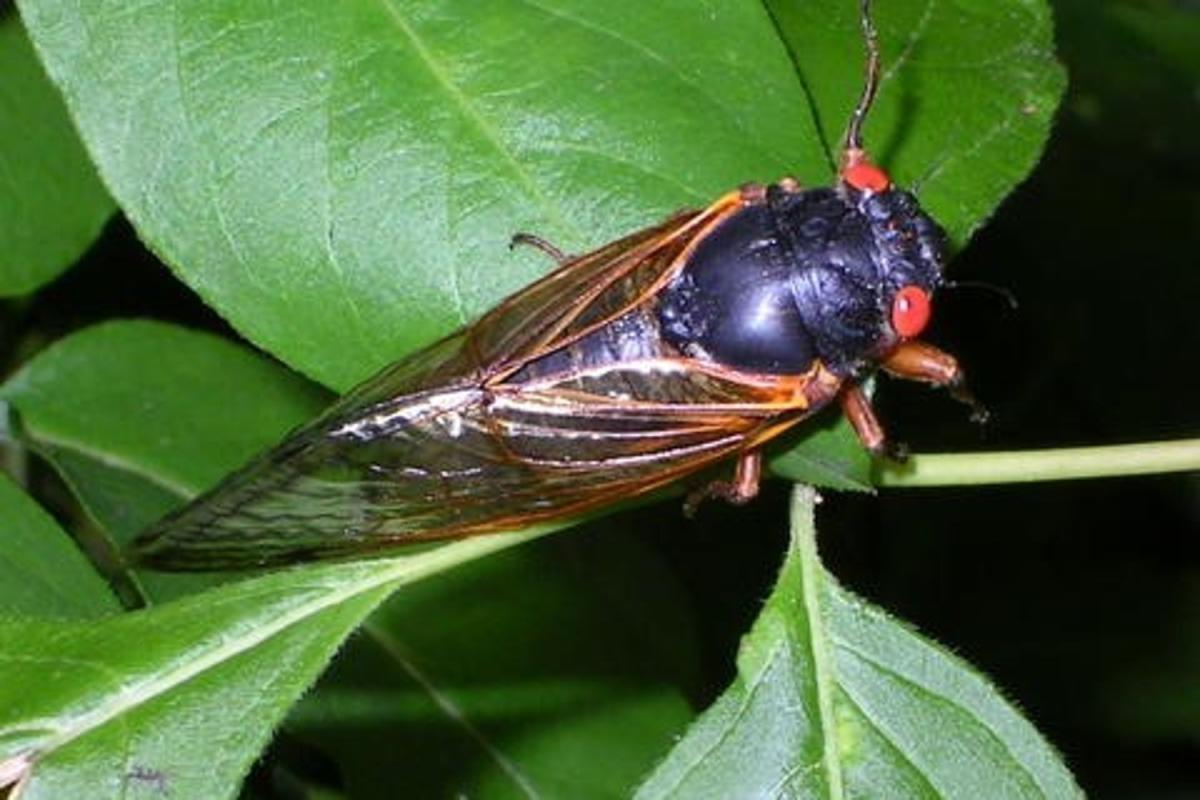
Sophia Frederika/Wikimedia Commons (Sophia Frederika/Wikimedia Commons)
Noon Edition airs on Fridays at noon on WFIU.
After 17 years, Brood X cicadas are about to make themselves known throughout the Midwest in a big way.
The insects will take to the trees this spring to mate across Indiana, Ohio, Illinois, Pennsylvania, Maryland and Washington, D.C. There are several theories as to why some species of cicadas emerge periodically– one being that it is a survival technique.
According to National Geographic, there are 15 periodical cicada broods– and Brood X is the largest. They look a little different than regular, annual cicadas and are much more numerous. Brood X has a black body, red eyes and clear wings.
Brood X cicadas have been living underground as a wingless nymph since their last appearance in 2004. Their emergence is triggered when the ground temperature reaches 64 degrees. Once they’re above ground, their life span is less than two months.
A lot about the world has changed since 2004, and now everyone can help scientists gather data on location and behavior of the insects.
Purdue will use iNaturalist, an app that tracks biodiversity data, to collect information about where and when Brood X cicadas emerge.
Additionally, cicada enthusiasts can download Cicada Safari, another app that allows users to photograph and submit location data about adult Brood X cicadas to researchers at the Center for IT Engagement at Mount St. Joseph University in Cincinnati.
Citizen science is helpful in situations like these, because the window of opportunity to gather data is small and there aren’t enough scientists to track the entirety of Brood X.
This week on Noon Edition, we’re talking with naturalists and insect experts about the Brood X emergence.
Emma Atkinson contributed to this report.
You can follow us on Twitter @NoonEdition or join us on the air by calling in at 812-855-0811 or toll-free at 1-877-285-9348. You can also send us questions for the show at news@indianapublicmedia.org.
Note-This week of our guests and hosts will participate remotely to avoid risk of spreading infection.
Guests
Steve Cotter, City of Bloomington Parks and Recreation Department, Natural Resource Manager
Megan Abraham, Department of Natural Resources, Division Director and State Entomologist
Elizabeth Barnes, Exotic Forest Pest Educator, Purdue University






